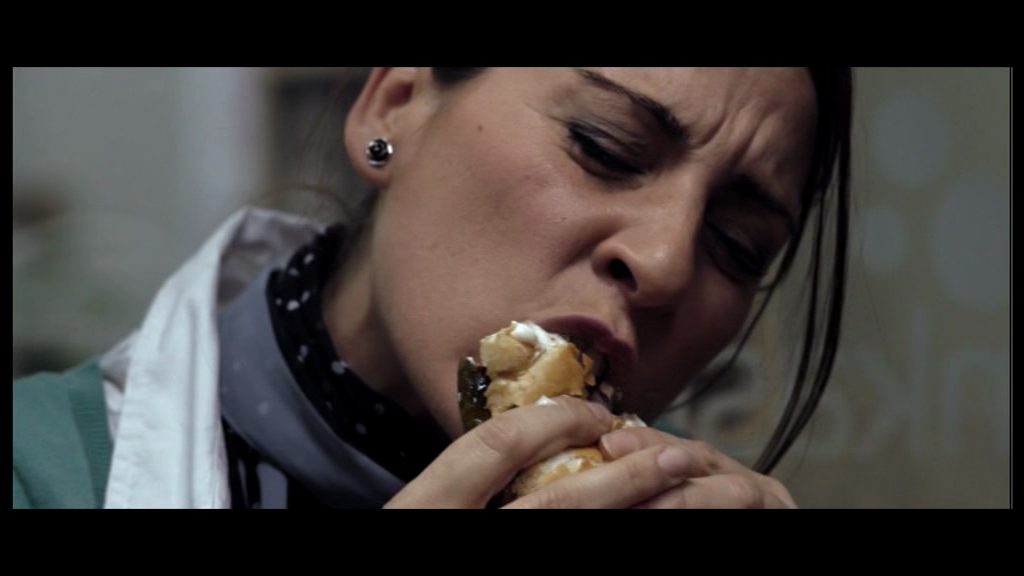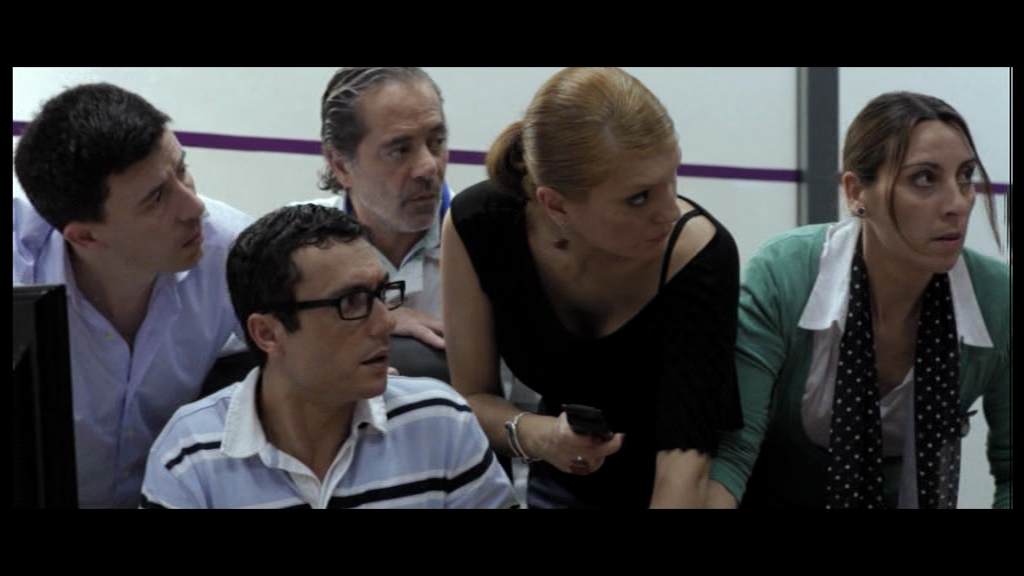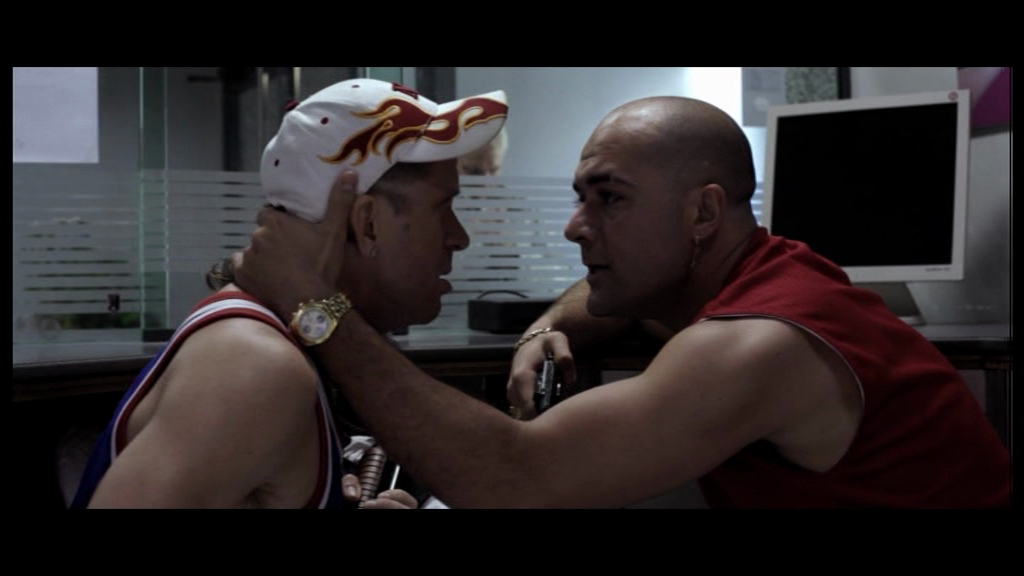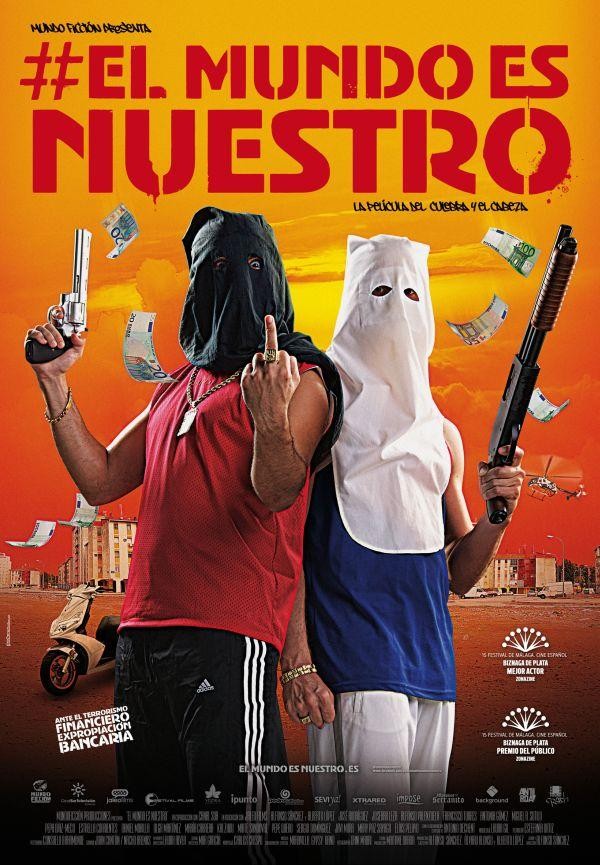Last summer, a Spanish film had a modest success at the cinema: El Mundo es Nuestro (The World Is Ours), directed by Alfonso Sánchez, starring himself and Alberto López. The origin of this film is in a series of shorts released on Youtube, produced in the simplest way and showing the solid education in independent theater of the performers; one fixed camera and two guys, sitting in iconic places of Seville, chatting about this and that and nothing in particular. The one thing setting them apart from regular stand up comedy was that in each of the first three shorts, the two friends were characterized as a local stereotype: in “This isn’t what it used to be,” canis (somewhere between working-class and petty criminals),
The first of the original shorts (unsubtitled Spanish).
That’s the way it is stars upper-class, conservative men with a very distinct set of local idiosyncrasies, and It was different, back then has hippies, for lack of a better word (in a different country or year they would have been hipsters: guys of middle-class origin with a snobbish mix of liberal values). As I write, the original video has more than 1,268,000 Youtube views and the second one, more than 2,625,000. The canis and the posh guys appeared in different sequels, and after some intensive and creative crowdfunding, Alfonso Sánchez directed his film, with the original petty criminals, Culebra and Cabeza, as protagonists.
 |
| The World Is Ours |
The plot is not the most original in the world: Seville’s favorite crooks plan a bank robbery that goes wrong when a mysterious third man takes the entire bank office hostage, including them, and demands to appear on TV to give a very important message. As a fan of the original shorts, I went to see the film. And at the box office, I took a look at what other options the multiplex was giving:
- A woman wants to kill another one because she’s younger and prettier.
- Two men save the world from the evil plans of another man.
- A prison mutiny. It’s a man’s prison and there is one woman as hostage. Naturally.
- A war flick with big macho guys.
- A handful of brats give a party.
- If he stalks you, it means he loves you.
- Girl is infatuated with guy who still remembers his ex. Said ex is baaaaaad and meeeeeeean.
And The World is Ours, a film that I was looking forward to, but which didn’t seem very promising from a feminist perspective. In fact, I assumed the film worked on the premise that I don’t exist, because in the Youtube videos, women are entirely absent, as characters and even as mentions. Luckily, I was wrong. If feminism is the radical idea that women are human beings, The World is Ours is a wonderfully feminist film.
When was the last time that you saw a film that didn’t just pass the Bechdel test, but also had female characters that were not victims of sexual violence? How many films do you remember in which some of those female characters were simultaneously kind and clever? How many films with supporting female characters that aren’t the hero’s girlfriend?
 |
| A woman enjoying lunch. It is not a major plot point. |
In The World is Ours, you can find almost anything you could wish in a comedy portrait of women in Southern Spain. First of all, quantity: male and female roles with dialogue are in a 13:8 proportion. Not bad!
Characterizations show a bit of everything: people are kind or disgusting, clever, naive, or stupid. People, men and women, do their jobs with varying levels of honesty and efficiency. The problems shown are human, and often universal. Consider these; some of them feel particularly local to me, but anyone could relate:
- An exploited intern.
- Unemployed, on the dole, with bits of illegal work on the side (think British social comedy).
- Working for two because your partner is unemployed. Being partly proud and partly resentful of your head-of-the-family position.
- Queer and gradually out of the closet.
- A wormy, servile coward; bully to the weak.
- A good, rational professional adjusting badly after a transfer at work. It’s not really their fault. A bit like in Northern Exposure.
- Friendship from the cradle, passionate and unconditional.
- Someone whose grey, boring job is embittering every aspect of their lives.
 |
| Five hostages. |
Can you guess the sex of any of the characters from my descriptions? You can’t? That’s the best test of this film’s feminism: if we took all of them and switched, it would work just as well.
It’s not perfect, but it’s so enjoyable that I don’t care. In the words of my husband, who saw the film with me and doesn’t have any gender studies on his CV, “it’s a film with real women, who are human.” Thanks, Alfonso Sánchez, and the rest of the team.
 |
| Culebra and Cabeza. |
El Mundo es Nuestro, esa película feminista.
Estaba yo en la puerta del cine para entrar a ver El Mundo es Nuestro y me fijé en lo que había en la cartelera. Os doy un resumen rapidito:
- Una mujer quiere matar a otra porque es más guapa.
- Dos hombres salvan el mundo del plan de otro hombre.
- Un motín en una cárcel. De hombres. Con una mujer de rehén, claro.
- Una de guerra con soldados machotes.
- Unos niñatos dan una fiesta.
- Si te acosa es que te quiere.
- Chica pierde el culo por un muchacho que todavía se acuerda de su ex. La ex es mala y tontita.
Y El Mundo es Nuestro, una película que no prometía mucho como reflejo de que yo existo. Porque en los vídeos on Youtube de mundoficción las mujeres están ausentes, como personajes o como menciones. Afortunadamente, me equivocaba. Si el feminismo es creer que las mujeres somos seres humanos, El Mundo es Nuestro es una película maravillosamente feminista.
¿Cuándo fue la última vez que viste una película con más de dos personajes femeninos, ninguna de las cuales era víctima de violación, ni de maltrato doméstico? ¿Cuántas en la que algunas de esas mismas mujeres son listas y buenas personas a la vez? ¿Cuántas en las que los personajes femeninos son algo más que la novia del protagonista?
Pues El Mundo es Nuestro tiene casi todo lo que se podría desear en un retrato cómico de las mujeres en España. Para empezar, la cantidad: los personajes masculinos y femeninos con diálogo están en la bonita proporción de 13 a 8. No está mal.
Sobre sus caracterizaciones, entre ellos y ellas hay de todo: gente indeseable y encantadora, gente lista y tonta, gente que hace su trabajo con dosis variables de ética y de eficacia. Los problemas son humanos, y universales: ser un becario explotado. Estar en paro. Trabajar por dos porque quien está en paro es tu pareja. Salir del armario. Ser un pelotillero cobarde y miserable. Sentirte fuera de lugar en una cultura ajena, después de un traslado por motivos de trabajo. ¿A que no adivinas cuáles de estas situaciones corresponden a un hombre o a una mujer en la película? Ese es el mejor test: con todos los sexos cambiados, la película funcionaría igual de bien.
No es perfecta, pero se disfruta tanto que da igual. En palabras de quien me acompañó al cine, “una película con mujeres de verdad, que son personas”. Gracias, Alfonso Sánchez, y a todos los demás enteristas.
Eugenia Andino Lucas is a teacher of English as a Foreign Language in Spain. She’s also working on a PhD on Gender Violence in the novels of Charles Dickens. You can follow her on twitter: @laguiri and on her blog: eugeniaandino.bachpress.org.
